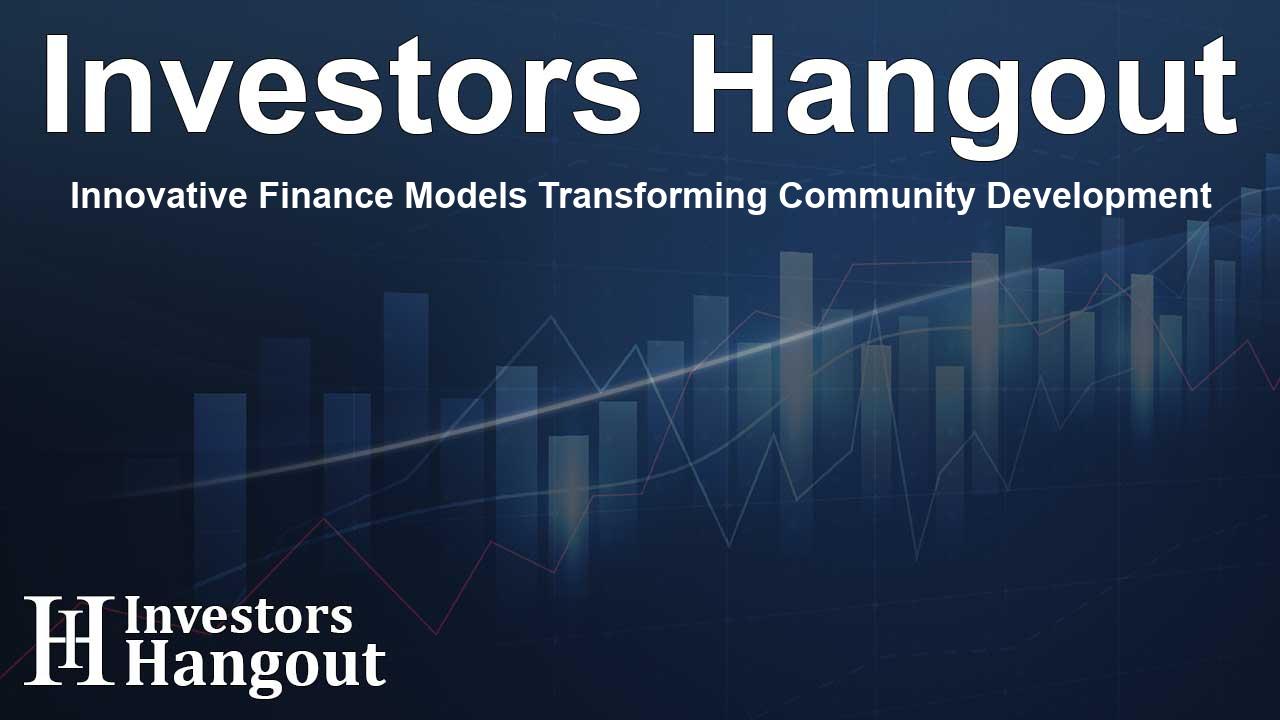Innovative Finance Models Transforming Community Development

Transforming Community Development Finance for a Sustainable Future
In a recent announcement, influential leaders in community development, including David Fukuzawa, Nancy O. Andrews, and Rebecca Steinitz, have put forth a groundbreaking vision for community development finance. They released an insightful article titled, "A New Blueprint for Financing Community Development," emphasizing the need for a paradigm shift that places community needs and voices at the forefront of financial decision-making.
Key Principles of the New Financing Paradigm
The article articulates crucial principles designed to guide community development finance towards more equitable and impactful solutions. The authors outline a departure from traditional investment methodologies that often prioritize market trends and scale over meaningful community engagement.
Challenges of the Current Approach
Historically, many investment strategies have mirrored market conservatism, which often leads to a lack of consideration for unique local needs. This overreliance on market-driven solutions has neglected the importance of tailored, community-based approaches that can effectively address pressing social issues.
Empowering Local Voices
To combat these challenges, the proposed new paradigm emphasizes the necessity of equity and community involvement. It aims to redefine the role of financiers by advocating for a collaborative approach that elevates the voices of community stakeholders. This entails sharing power with community development practitioners who may not have financial backgrounds but possess crucial insights into the needs and dynamics of their communities.
Innovative Financing Strategies
The article not only analyzes historical successes and shortcomings in community development finance but also presents innovative models that have emerged. By showcasing practical examples, it demonstrates how organizations can implement these principles in real-world settings.
Case Studies of Successful Implementation
One of the highlights of the article is its examination of three organizations that exemplify these new financing strategies. Each of these organizations has collaborated with the Center for Community Investment (CCI), showcasing effective partnerships that have led to tangible community improvements.
The Community Owned Real Estate program stands out as a model, which emphasizes the development and control of housing solutions by local stakeholders. Additionally, Lift to Rise and the Housing Catalyst Fund are recognized for their innovative approaches to address housing affordability and community well-being.
Long-term Support from Philanthropy
The authors also appeal to philanthropic organizations to provide the necessary support to facilitate these strategic shifts. They urge the adoption of patient, long-term capital investments that demonstrate trust in the communities they serve. By doing so, philanthropy can significantly enhance the impact of community development initiatives.
Future Directions and Collaboration
As the financial landscape evolves, the synergy between community-led efforts and philanthropic support is crucial. The vision set forth by Fukuzawa, Andrews, and Steinitz underlines the importance of collaboration among local communities, financial institutions, and philanthropic entities to foster environments where sustainable development can flourish.
About the Authors and Their Contributions
David Fukuzawa brings a wealth of experience as a former managing director at the Kresge Foundation, with a deep understanding of philanthropy and community impact. Nancy O. Andrews, with her extensive background as a fellow at Stanford University and former CEO of the Low Income Investment Fund, provides insights into the operational aspects of community investment. Finally, Rebecca Steinitz, a seasoned communication consultant, contributes her expertise in conveying complex ideas in accessible ways.
Frequently Asked Questions
What is the main goal of the new community development finance paradigm?
The goal is to prioritize community voices and needs over traditional market-driven methods, ensuring that financial strategies are tailored to local circumstances.
Why is empowering local communities important in development finance?
Empowering local communities fosters tailored solutions that address specific challenges, ensuring more effective use of resources and sustainable outcomes.
What role should philanthropy play in community development finance?
Philanthropy should provide long-term, patient capital that supports community initiatives while also promoting innovative and flexible financing strategies.
Can you give examples of organizations implementing these new financing models?
Examples include the Community Owned Real Estate program, Lift to Rise, and the Housing Catalyst Fund, all of which have shown successful community engagement and impact.
How does this new approach differ from previous methods?
This approach shifts the focus from a strict market-driven framework to a model that values equity, community involvement, and bespoke solutions tailored to local needs.
About Investors Hangout
Investors Hangout is a leading online stock forum for financial discussion and learning, offering a wide range of free tools and resources. It draws in traders of all levels, who exchange market knowledge, investigate trading tactics, and keep an eye on industry developments in real time. Featuring financial articles, stock message boards, quotes, charts, company profiles, and live news updates. Through cooperative learning and a wealth of informational resources, it helps users from novices creating their first portfolios to experts honing their techniques. Join Investors Hangout today: https://investorshangout.com/
Disclaimer: The content of this article is solely for general informational purposes only; it does not represent legal, financial, or investment advice. Investors Hangout does not offer financial advice; the author is not a licensed financial advisor. Consult a qualified advisor before making any financial or investment decisions based on this article. The author's interpretation of publicly available data shapes the opinions presented here; as a result, they should not be taken as advice to purchase, sell, or hold any securities mentioned or any other investments. The author does not guarantee the accuracy, completeness, or timeliness of any material, providing it "as is." Information and market conditions may change; past performance is not indicative of future outcomes. If any of the material offered here is inaccurate, please contact us for corrections.